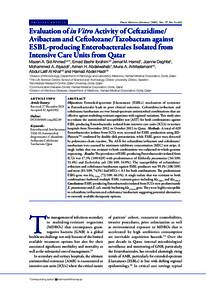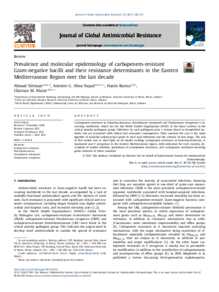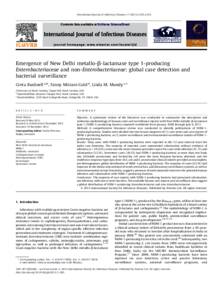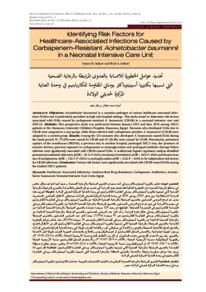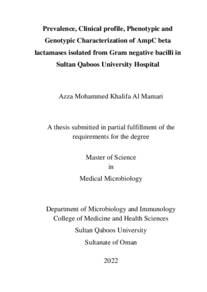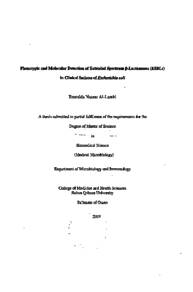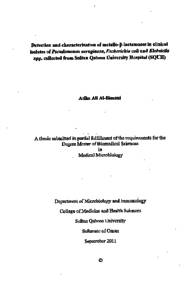Document
Evaluation of in vitro activity of ceftazidime/avibactam and ceftolozane/tazobactam against ESBL-producing enterobacterales isolated from intensive care units from Qatar.
Identifier
DOI 10.5001/omj.2022.89
Contributors
Ibrahim, Emad Bashir., Author
Hamid, Jemal M., Author
Daghfal, Joanne., Author
Al-Yazidi, Mohammed A., Author
Abdelwahab, Aimen H., Author
Al-Maslamani, Muna A., Author
Al-Khal, Abdul Latif., Author
Abdel Hadi, Hamad., Author
Publisher
Oman Medical Specialty Board.
Gregorian
2022-09
Language
English
English abstract
Objectives: Extended-spectrum β-lactamases (ESBLs) mechanism of resistance
in Enterobacterales leads to poor clinical outcomes. Ceftazidime/avibactam and
ceftolozane/tazobactam are two broad-spectrum antimicrobial combinations that are
effective against multidrug-resistant organisms with regional variations. This study aims
to evaluate the antimicrobial susceptibility test (AST) for both combinations against
ESBL-producing Enterobacterales isolated from intensive care units (ICUs) in tertiary
hospitals from November 2012 to October 2013 in Qatar. Methods: A total of 629
Enterobacterales isolates from ICUs were screened for ESBL production using BD PhoenixTM confirmed by double-disk potentiation, while ESBL-genes were detected
by polymerase chain reaction. The ASTs for ceftazidime/avibactam and ceftolozane/
tazobactam were assessed by minimum inhibitory concentration (MIC) test strips. A
single isolate that was resistant to both combinations was subjected to whole-genome
sequencing. Results: The prevalence of ESBL-producing Enterobacterales isolated from
ICUs was 17.3% (109/629) with predominance of Klebsiella pneumoniae (56/109;
51.4%) and Escherichia coli (38/109; 34.9%). The susceptibility of ceftazidime/
avibactam and ceftolozane/tazobactam against ESBL-producers was 99.1% (108/109)
and most (81/109; 74.3%) had MICs < 0.5 for both combinations. The predominant
ESBL-gene was blaCTX-M (72/109; 66.1%). A single isolate that was resistant to both
combinations harbored multiple ESBL resistant-genes including blaVEB-5 and blaVIM-2.
Conclusions: ESBL-producing Enterobacterales isolated from ICUs were predominantly
K. pneumoniae and E. coli, mainly harboring blaCTX-M gene. They were highly susceptible
to ceftazidime/avibactam and ceftolozane/tazobactam suggesting potential alternatives
to currently available therapeutic options.
Member of
Resource URL
Category
Journal articles

